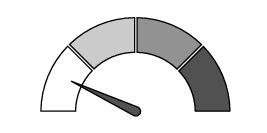 | Weighted combined value. The value is weighted between electric mode and fuel mode over the entire drive cycle. |
 | Gram CO₂/km |
 | Litres/100 km |
 | Certified value for the car's potential range ("up to") in km in electric mode. The value should not be interpreted as an expected range, and the range is difficult to achieve during normal driving. |
 | Urban and suburban driving |
 | Average value over all four drive cycle phases (urban, suburban, extra-urban and motorway driving) |
 | Automatic gearbox |
 | Low value |
 | High value |
Note
Note
The values in the table above for fuel consumption, CO₂ emissions, and range for electric mode are based on special drive cycles (see below). The car's weight may increase depending on its equipment level. Together with how heavily the car is loaded, this affects fuel consumption and CO₂ emissions, and reduces its range in electric mode. According to WLTP, each car has unique fuel consumption, CO₂ emission values and electric range values, depending on how the car is equipped. These values range between the low value and high value in the table above. In many markets, you can find your car's unique fuel consumption, CO₂ emission values and electric range values in the car's registration document.
The certified values for the car should not be interpreted as the expected values. The certification values are the comparative values obtained during special drive cycles (see below).
There are several reasons for fuel consumption that is higher and an electric range that is shorter than the values in the table. Examples of these include:
- If the car is not regularly charged from the mains.
- If the car is equipped with extra equipment that affects its weight.
- Driving style.
- If the customer chooses wheels other than those mounted as standard on the basic version of the model, this could increase rolling resistance.
- High speed causes increased air resistance.
- Fuel quality, road and traffic conditions, weather and the condition of the car.
A combination of the examples above could increase consumption considerably.
There may be huge deviations in fuel consumption if comparing to the drive cycle profiles (see below), which are used in the certification of the car and on which consumption figures in the table are based. For further information, please refer to the referenced regulations.
Note
WLTP standard
From and including 1 September 2018, a new standard was introduced for calculating consumption values in the car. The WLTP standard (Worldwide Harmonised Light-Duty Vehicles Test Procedure) represents the average driving conditions for everyday driving. In comparison with the previous standard (NEDC), WLTP takes into account more varied traffic situations and speeds, but also equipment and weight classes. Optional equipment that affects consumption is deactivated during testing, e.g. air conditioning, seat heating, etc. The new standard should provide more realistic figures when it comes to fuel consumption, carbon dioxide and emissions, as well as range for electric operation. The values are intended to allow comparison between different cars and not to represent your typical normal consumption and range for electric mode.
Drive cycle profiles
A drive cycle simulates actual average driving of the car. The standard is based on four different drive cycle profiles. The four drive cycle profiles are:
- Urban driving – slow driving
- Suburban driving – average driving
- Extra-urban driving – fast driving
- Motorway driving – very fast driving.
Every drive cycle is determined by different conditions such as speed, time and mileage, for example.
The official value for combined driving, which is shown in the table, is a combination of the results from the four drive cycles, in accordance with legal requirements.
The exhaust gases are collected in order to extrapolate the carbon dioxide emissions (CO₂ emissions) during the four drive cycles. These were then analysed to determine the value for CO₂ emissions.
